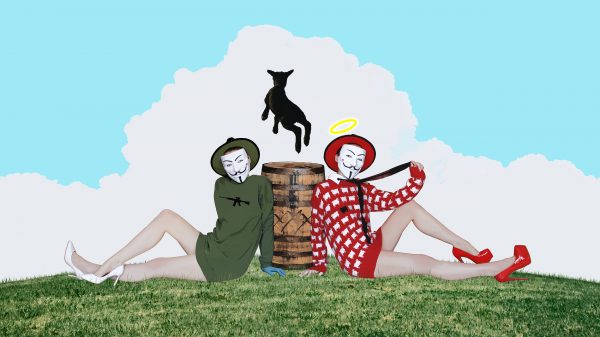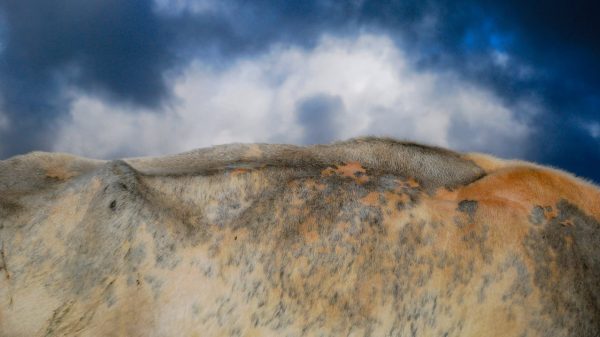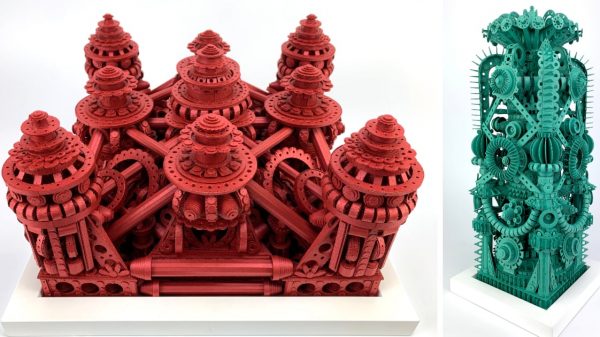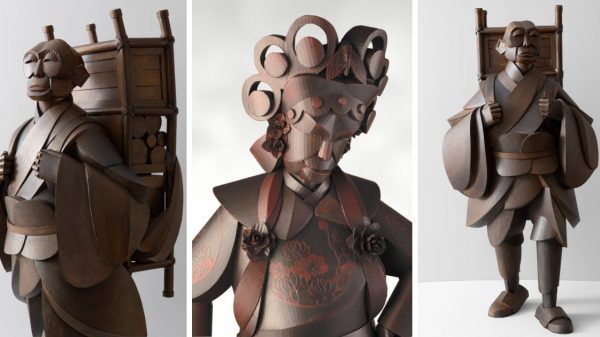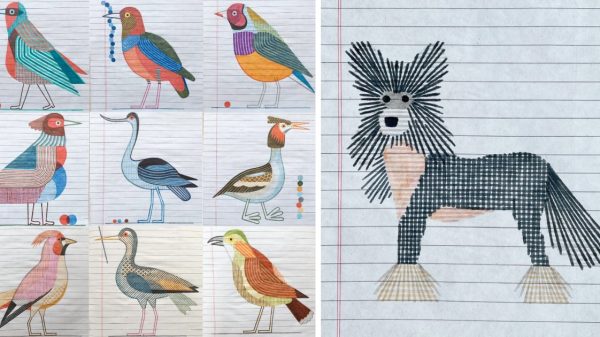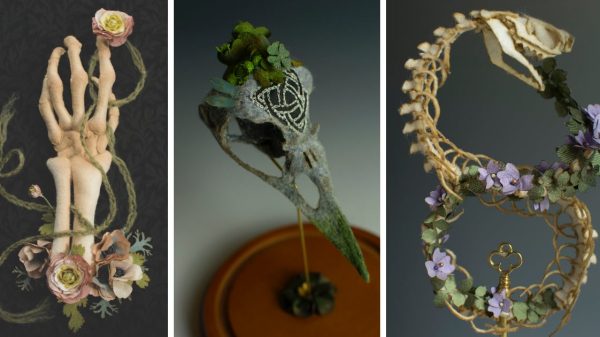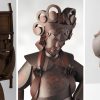Article from: Art News
During the ’60s, these oddly charming creations made Oldenburg one of the leading artists of Pop, a movement that embraced the visual language of advertisements and consumerism, and allowed it to invade art spaces that were still dominated by abstraction.
But Oldenburg’s art stood out among pieces by artists such as Andy Warhol, Roy Lichtenstein, and James Rosenquist because it was stranger, blunter, more overtly humorous. There was something truly unusual about making a sculpture of a toilet that looked like a deflated plastic blow-up, and Oldenburg often seemed to revel in it.
So, too, has the general public, which has greeted Oldenburg’s art in kind. His and van Bruggen’s 1985–88 work Spoonbridge and Cherry, a 51-foot-long sculpture of a piece of cutlery with a gravity-defying piece of fruit placed on its edge, is one of the most iconic public artworks in the United States. It has long been on view at Minneapolis’s Walker Art Center, which owns it.
“I was honored to have this great friendship with one of the most radical artists of the 20th century,” Pace founder Arne Glimcher said in a statement. “In addition to his inextricable role in the development of Pop art, he changed the very nature of sculpture from hard to soft, and his influence can be seen to this day.”
Claes Oldenburg with his Floor Hamburger (1962).
‘The Everyday Crap’
“I am for an art that embroils itself with the everyday crap & still comes out on top,” Oldenburg wrote in a manifesto-like 1961 essay. “I am for an art that imitates the human, that is comic, if necessary, or violent, or whatever is necessary. I am for an art that takes its form from the lines of life itself, that twists and extends and accumulates and spits and rips, and is heavy and coarse and blunt and sweet and stupid as life itself.”
It was a statement that exemplified the ethos behind the six-decade career that followed, one in which life and art blurred entirely.
The Street (1960) was an installation staged near New York’s Washington Square Park, at the Judson Memorial Church, in which viewers walked into an abject array of urban detritus—cardboard, tattered papers, dirtied pieces of newsprint, and more. (Though temporary, the piece was immortalized in a film in which Oldenburg and his partner at the time, Patricia Muchinski, don bandages and flail around inside it.) That work’s follow-up, The Store (1961), featured a crowded display of lumpy painted sculptures in an East Village space that evoked a shop where objects like dresses, shoes, and desserts could be bought.
Building on similar works known as happenings that were being staged by avant-garde artists across New York at the time, these two works succeeded in spinning the stuff of life itself into raw material for art-making.
“Every major artist dreams of reconstructing the world in his own image, but Oldenburg has actually succeeded in translating the external environment into a series of shapes and images that physically resemble the large, mesomorphic frame of Claes Oldenburg,” Rose wrote in Artforum.
Claes Oldenburg and Coosje van Bruggen, Spoonbridge and Cherry, 1985–88.
Scaling Up
If The Store and The Street were lo-fi pieces with a rough-and-tumble feel, the works by Oldenburg that followed were works that had a slightly more traditional vibe: soft sculptures of food, cars, and clothes that sagged, as though the air had begun to leak out of them.
These sculptures depict things which may look desirable, like a baked potato with two pats of butter on it or a mint-green ice cream cone. But because these unevenly painted works droop, they appear off-kilter and somehow unappealing. They are funny, too, and often quite winsome.
To make them, Oldenburg relied on old-school sculptural methods that involved a process of scaling up, starting with a model, then translating its design to a larger canvas, from which he would create a stencil. Machinski would usually cut out Oldenburg’s proposed shape and sew it together. In order to create these sculptures’ puffy quality, Oldenburg filled them with foam rubber. Later on, Oldenburg began taking up vinyl in these works as well.
“The strikingly original early work was hugely influential on many artists, who were informed by his freedom of thought and radical mode of expression,” dealer Paula Cooper said in a statement. “When he began his collaboration with Coosje van Bruggen, with whom I had a close friendship, the work became grander and bolder. It was thrilling to work with Claes, whose odd take on things was delightful, and could completely turn one’s mood around.”
Still, Oldenburg had gained enough admirers early on to obtain a place in the U.S. Pavilion at the Venice Biennale that year alongside Jasper Johns, Robert Rauschenberg, John Chamberlain, and Frank Stella. He also showed at Documenta 4 in 1968, where he showed his Giant Poolballs (1967).
Begun in 1965, Mouse Museum was later revised by Oldenburg in 1977 to include an area that he called the Ray Gun Wing, after a similarly titled 1959 sculpture. It featured objects that had right angles in them. As if to further that idiosyncratic choice, Oldenburg told MoMA, “If you spell Ray Gun backwards, it’s ‘Nugyar,’ which is very close to ‘New York.’ New York, Nugyar.”
Coosje van Bruggen and Claes Oldenburg.
Unimportant Objects
Oldenburg was born in 1929 in Stockholm. His father was a Swedish diplomat who worked in New York, and in 1936, the family relocated to Chicago, where Oldenburg père began work at the Swedish consulate. All the while, Oldenburg began furthering his own interest in art, particularly drawing.
But unlike most children, Oldenburg, in his own recounting, seemed to exhibit an inclination toward conceptualism early on. He described developing his own country, Neubern, which was sited in the South Atlantic and existed mainly in the form of drawings. When he attended Yale University as an undergraduate, he majored not in art but in literature and art history.
Upon graduating in 1950, Oldenburg took up journalistic work. One of his stories—which were always “unimportant,” he told the Los Angeles Times—revolved around an old man who spent his life amassing a collection of trinkets, and Oldenburg began to do the same, plucking scraps from the street and keeping them for himself. He moved to New York in 1956 and later achieved fame there.
Although Oldenburg worked on increasingly bigger scales, he continued to emphasize the mundane, sometimes in explicitly political ways. Lipstick (Ascending) on Caterpillar Tracks, from 1969, features a large rendering of a cosmetic placed atop a tank-like structure; it was envisioned as a site where students could opine about anti–Vietnam War sentiments, and can still be seen in New Haven, Connecticut, today on Yale’s campus.
Many more public art projects followed. At Oberlin College in Ohio, Oldenburg made a giant Cor-Ten steel sculpture of a plug that appeared to emerge from the ground. And in Philadelphia, he made a sculpture of a clothespin that rises 45 feet into the air.
In the decades after, Oldenburg would continue to make these large-scale works with Coosje van Bruggen, whom he married in 1977. (He and Muchinski divorced in 1970, and Oldenburg was in a relationship with the artist Hannah Wilke for a period after that.) With van Bruggen, who died in 2009, he crafted an upside-down ice cream above a Cologne mall, a trowel standing upright in Des Moines, a box filled with bent matches in Barcelona, and more.
A series of major shows for Oldenburg has coincided with commissions for these grand permanent works. In 1995, Oldenburg was the subject of a retrospective at the National Gallery of Art in Washington, D.C. and the Guggenheim Museum in New York, and in 2009, he had another career-spanning show at the Whitney Museum. His work will appear in the Carnegie International later this year.
Despite the fact that his work grew to proportions that art rarely ever tends to reach, Oldenburg, who was always plainspoken in interview, described these monumental works in decidedly small terms.
source
Article from: Art News


